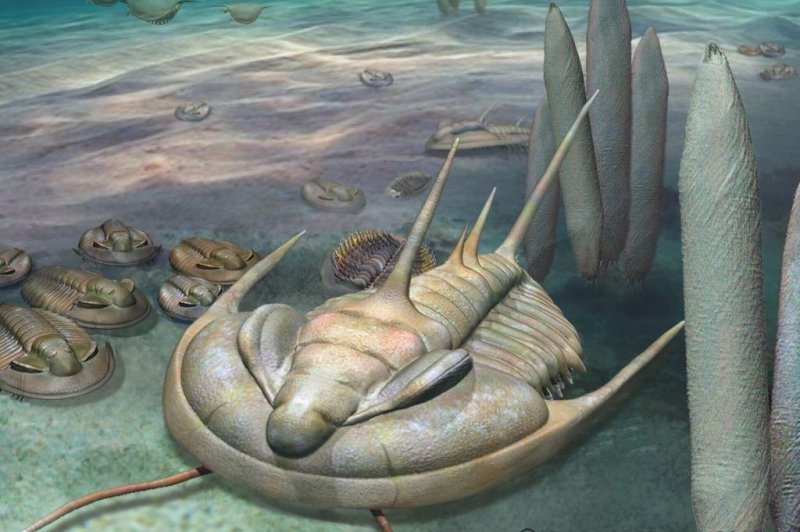Trilobites featured a hard, horseshoe crab-like shell adorned with long, sharp spines. Photo by University of Adelaide
June 13 (UPI) -- Paleontologists have discovered a giant new trilobite species on South Australia's Kangaroo Island. The discovery promises insights into the success of arthropods during the Cambrian Explosion.
Though now extinct, trilobites were one of the most successful animal groups in evolutionary history. The horseshoe crab-like creatures boasted hard, calcified exoskeletons adorned with a series of sharp spines. The primitive arthropods survived for 270 million years and are abundant in the fossil record.
The new trilobite species, described this week in the Journal of Systematic Palaeontology, is about 500 million years old.
"We decided to name this new species of trilobite Redlichia rex -- similar to Tyrannosaurus rex -- because of its giant size, as well as its formidable legs with spines used for crushing and shredding food, which may have been other trilobites," James Holmes, Ph.D. student with the University of Adelaide, said in a news release.
The trilobite fossil was recovered from Kangaroo Island's Emu Bay Shale, a geological formation famous for its preservation of ancient lifeforms. Analysis of the new fossil revealed the preservation of soft body parts, like the trilobite's legs and antenna.
The new species, which grew nearly 12 inches in length, is the largest trilobite ever found in Australia. But the new research suggests their size didn't make the trilobites invulnerable to hungry predators. Scientists found trilobite shells crushed by bigger, stronger species.
"There are also large specimens of fossilized poo, or coprolites, containing trilobite fragments in this fossil deposit," said Adelaide professor Diego García-Bellido. "The large size of injured Redlichia rex specimens and the associated coprolites suggests that either much bigger predators were targeting Redlichia rex, such as Anomalocaris -- an even larger shrimp-like creature -- or that the new species had cannibalistic tendencies."
Some 541 million years ago, a major diversification of multicellular organisms began. During this period, the so-called Cambrian explosion, almost all major animal phyla emerged. For decades, scientists have been working to unravel the mysteries of this dramatic evolutionary outburst. The latest research -- the discovery of giant trilobites and trilobites crushed by even bigger species -- suggests the arms race between predator and prey at least partially explains the diversification of life forms during the Cambrian explosion.
"The overall size and crushing legs of Redlichia rex are a likely consequence of the arms race that occurred at this time" said Holmes. "This giant trilobite was likely the terror of smaller creatures on the Cambrian seafloor."















